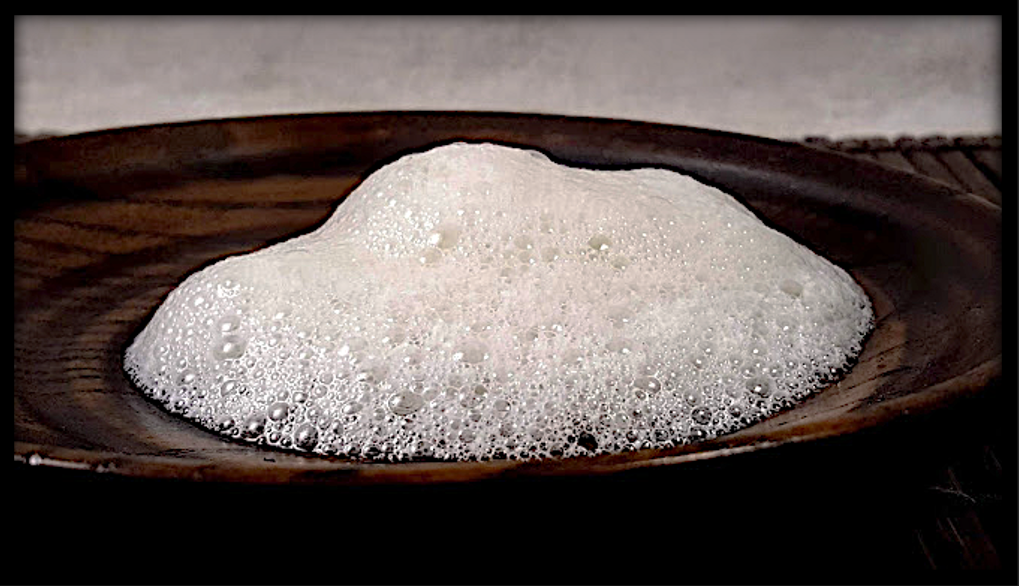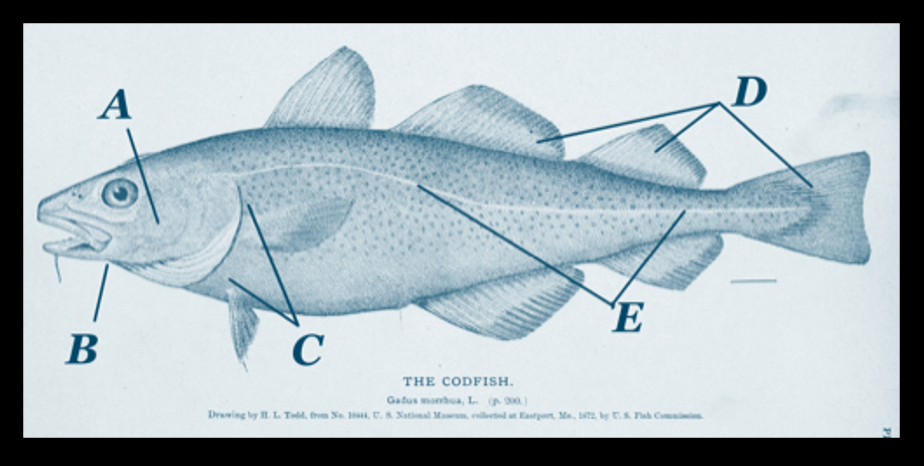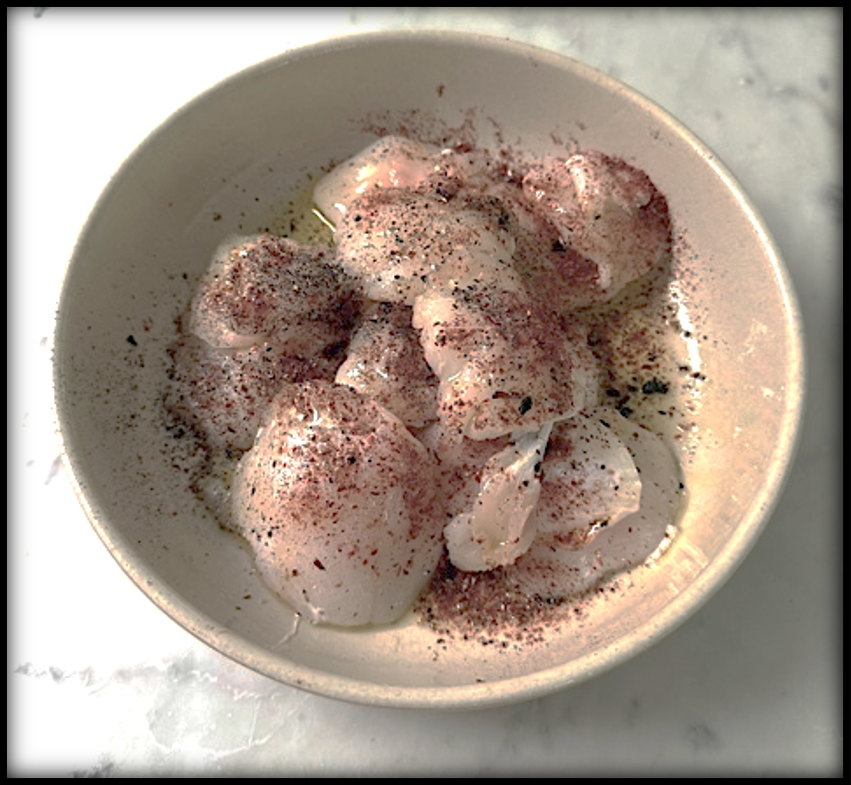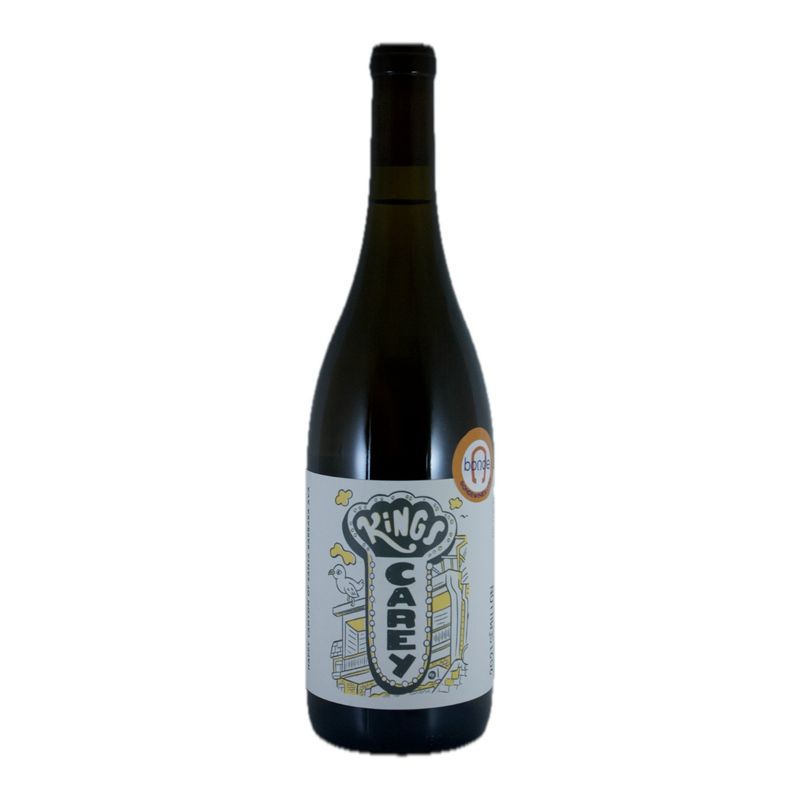REGULAR HOURS: TUESDAY-THURSDAY 12-6PM // FRIDAY & SATURDAY 12-8PM // SUNDAY 12-5PM // CLOSED MONDAYS
Crispy Cod Cheeks with Foamy Hot Tartar Sauce

Crispy Cod Cheeks with Foamy Hot Tartar Sauce
For 4 people
Prep Time: 20 minutes
Cook Time: 15 minutes
Ingredients:
- 12 beautiful fresh cod cheeks
- 1/2 teaspoon Aleppo pepper
- 1/2 teaspoon Espelette pepper
- 1 black lemon
- 1/2 teaspoon of Fleur de Sel
- 1 teaspoon of fresh lemon juice
- 1 Tablespoon of Extra Virgin Olive Oil
- 1 Tablespoon quality vegetable oil
- 1 egg yolk
- Japanese Panko (Japanese bread crumb)
Sauce:
- 1/2 cup chicken broth
- 1/3 cup dry white wine
- 1 Tablespoon of unsalted butter
- 1 1/2 teaspoon White Vinegar
- 1/2 Tablespoon of very finely chopped fresh shallot
- 1 teaspoon of very finely chopped capers
- 1/2 Tablespoon Relish Pickles, very finely chopped
- 1/2 teaspoon Soy or Corn Starch
- 1/2 teaspoon Agar Agar Powder
- A pinch of Salt and Pepper
- 2 oz Crème fraiche
- 1/2 Tablespoon finely chopped fresh dill
- 1/2 teaspoon Dijon mustard
- 1 teaspoon of honey

Preparation of the Cod cheeks
In a bowl, place all the ingredients (except the black lemon and the egg yolk), gently mix everything with a spoon, then add the cheeks and mix again delicately by hand. Arrange the cheeks on a flat plate, lightly grate some black lemon over the surface of the cheeks. Set aside in the refrigerator.
In a large sauté pan, heat the vegetable oil over medium heat. In a flat plate, pour a small amount of Japanese panko. In a bowl, place the beaten egg yolk with a teaspoon of water, then quickly dip each cheek in the mixture, immediately transfer to the panko (on both sides), then place in the pan. Let brown for 3 to 4 minutes, turn over and let brown again for two minutes. Keep warm.

The Sauce
In a saucepan over low heat, put the butter and shallots, sweat them while stirring with a wooden spoon, do not let the shallots brown. Add the white wine and vinegar, stir everything and let it evaporate over medium heat until fully reduced. Gently pour in the broth while deglazing the bottom of the pan, add the capers, the relish, the mustard, the honey, the dill, mix well, then lightly salt and pepper. Let it cook for 4 to 5 minutes.
Using an extra-fine sieve, transfer a small amount of the sauce into a bowl in which you previously placed the starch and agar-agar. Mix everything well using a small whisk, then add the rest of the strained sauce and make sure there are no lumps. Return the sauce without the solids (set them aside) to the pan and continue to cook for 3 minutes while whisking vigorously. Add the cream, mix, and remove from heat. Using a handheld immersion blender, quickly emulsify while incorporating as much air as possible so that the sauce begins to foam nicely.
Plating
On a serving plate, place a tablespoon of the solids from the sauce, spread in a 4-inch circle using the back of the spoon, then place three cod cheeks on top. Using a tablespoon, place a nice dollop of foam on top. With a microplane grater, lightly grate some of the fresh lemon peel over the dish, and lightly sprinkle with some dill.
But what to drink with Crispy Cod Cheeks?
This recipe is a true delight of complication for any professional sommelier which is precisely why I’ll give you a few tips for possible pairings.
The color of the sauce (the foam) is a milky white, so it would seem obvious to pair it with a white wine of similar color or even better, a white sparkling wine (foam).
The protein presents the first challenge: the Panko gives a crispy-crackling first impression, followed by a flaky texture from the fish, and finally a soft, moist finish. We therefore need a wine that is both crisp, lively, and direct, with a round, easy-drinking finish, but without too much volume to preserve freshness.
The second challenge lies in the aromatics used. The fish is marinated in red peppers that are both earthy and gently fruity, reminiscent of cumin. The black lime brings a musky, tangy flavor. The lemon juice slightly cures the raw fish, adding bright citric acidity. All of this leads us toward a wine with spicy, earthy aromas, but also a light touch of fruit.
As for the condiments of the sauce, they call for a wine offering vegetal, sweet-and-sour aromas, with a hint of heat and the bitterness of citrus zest. Since this dish contains no aggressive starches, we must absolutely avoid any wines that had skin contact (orange or rosé), as well as any tannins resulting from aging in oak or acacia barrels.
So here are my options:
Racines, Grande Réserve Blanc de Blancs NV
Sta. Rita Hills, Santa Barbara County, Central Coast, CA
Made using the traditional method (Champagne method), this wine offers just about everything this dish requires, just like the story behind this beautiful encounter between winemakers, combining natural elegance with creative energy.
When Burgundian Étienne de Montille decided to make wine on the American West Coast, he set off on a road trip with his cellar master, Brian Sieve. Starting in the Willamette Valley, they went down the Sonoma coast, crossed the Santa Cruz Mountains, and ended up in Santa Barbara. Of all the places they visited, the terroir and wines of Sta. Rita Hills, north of the AVA, held the most promise for their project. Another major asset of the region: the remarkable talents of Justin Willett (Tyler Winery) and Champenois Rodolphe Péters. The four teamed up for a joint project called Racines (french for “roots”) though the seeds were planted years earlier. In 2012, Raj Parr introduced Justin to Étienne; a few years later, Justin found himself in Burgundy, tasting wines with Brian Sieve, cellar master at de Montille. A strong friendship quickly formed, strengthened by regular correspondence and harvest-time advice. Later, Étienne and Brian approached Justin to join them in this American venture. Étienne also brought in Rodolphe Péters, from Champagne Pierre Péters, who was eager to launch a sparkling wine project in the U.S.
The rest is history… now told in a glass.
The grapes come from the Wenzlau Family, Sanford & Benedict, and Bentrock vineyards. The diversity of soils across these three distinct sites gives rise to a wine of unique elegance and vivid expression, marked by pronounced minerality and a long finish. Broad, rich, and creamy with a bit of air, this Grande Réserve shows a fine expression of phenolic minerality. It combines all the elements that define a great wine: fine bubbles, a structured mid-palate, aromas both spicy and mineral with depth, and a long, refreshing finish.
Our other still wine options:
Matthiasson Wines, Vermentino 2023
Cressida Vineyard, Los Carneros, Napa Valley, CA
Kings Carey Wine, Sémillon 2021
Happy Canyon of Santa Barbara, CA
Maloof Wines, Fancy Free 2023 (Aligoté / Chardonnay)
Nemarniki Vineyards, Chehalem Mountains, Willamette Valley, OR
Display prices in:USD

